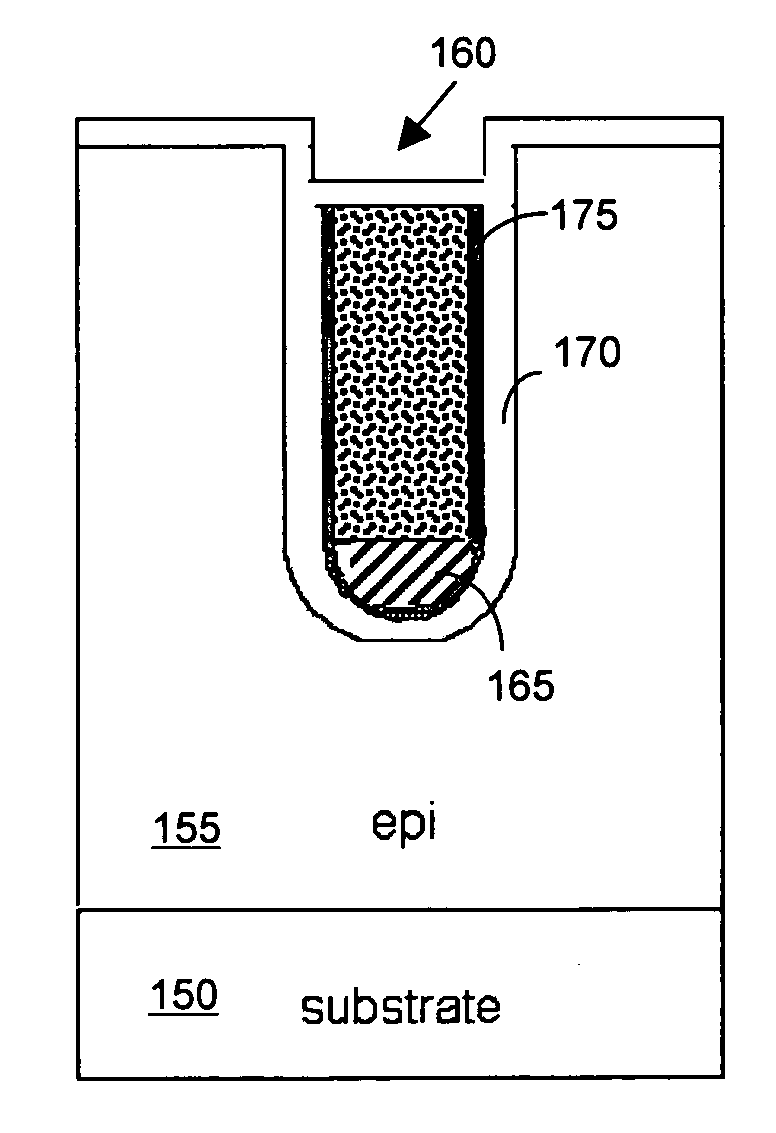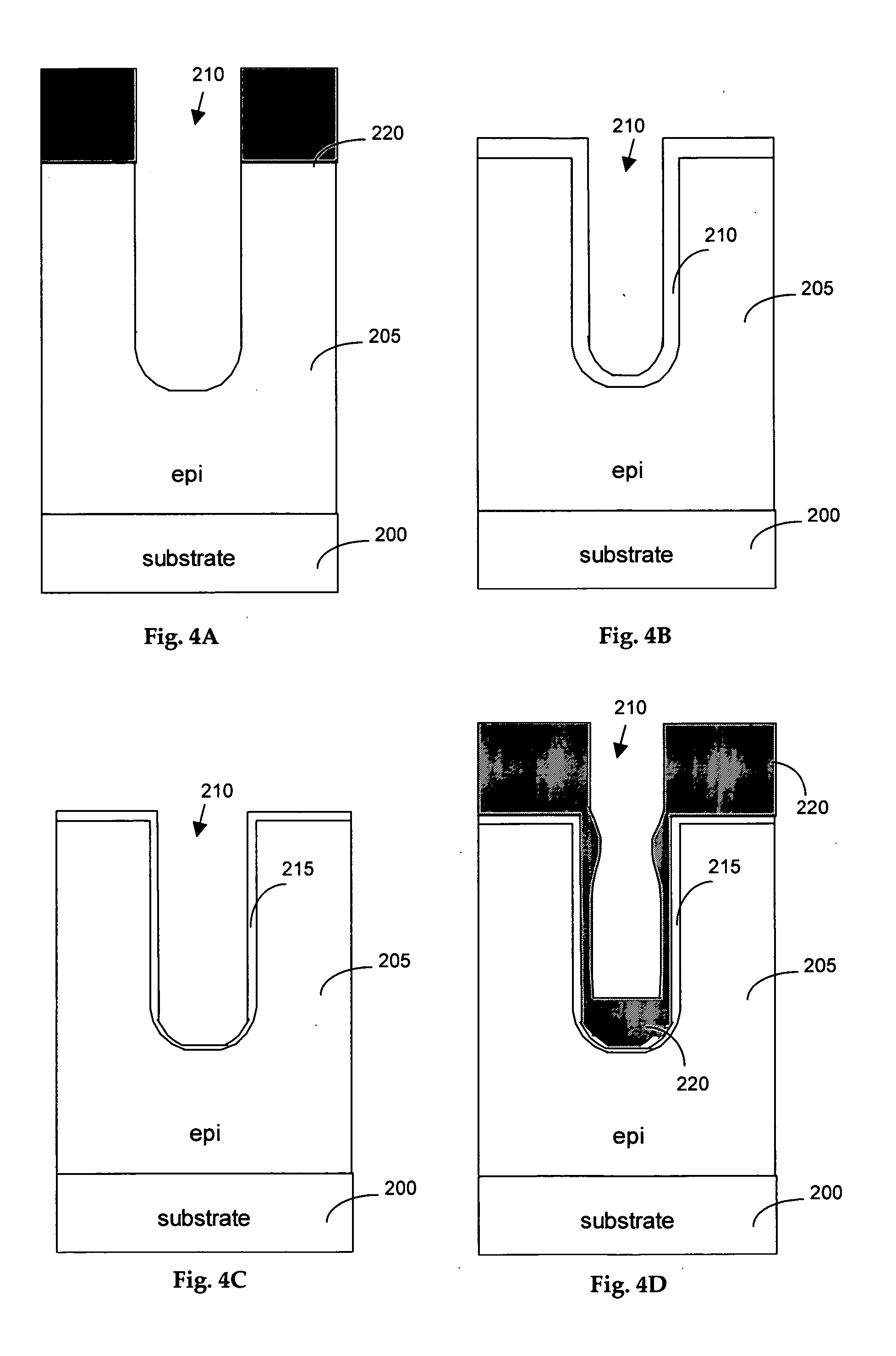Elimination of gate oxide weak spot in deep trench
a technology of gate oxide and deep trench, which is applied in the field of cell structure and fabrication process of semiconductor devices, can solve the problems of weak spots formed around the corners of the trench bottom, difficulty in forming thick oxide layers at the bottom of the trench, and often become obstacles, so as to improve device reliability, eliminate or reduce malfunctions, and improve device reliability
- Summary
- Abstract
- Description
- Claims
- Application Information
AI Technical Summary
Benefits of technology
Problems solved by technology
Method used
Image
Examples
Embodiment Construction
[0019] Please refer to FIG. 2 for a first preferred embodiment of this invention where a semiconductor device 100 is supported on a substrate 105 formed with an epitaxial layer 110. The semiconductor device 100 includes a trench 115 generally filled with polysilicon 120 to function as a gate. For the purpose of eliminating the weak oxide spots, the trenched gate 120 includes a composite dual gate oxide layer 125-1 and 125-2. The first oxide layer 125-1 is first formed for covering the sidewalls and the bottom of the trench 115 with a thick oxide layer 125-B disposed on the bottom of the trench. Then a second oxide layer 125-2 is formed that is disposed on top of the first oxide layer 125-1 and the thick bottom oxide layer 125-B. The second oxide layer 125-2 is formed to fill the weak oxide spots at the corner of the trench bottom. With a dual composite oxide layer, i.e., layers 125-1 and 125-2, the weak spots at the bottom corners of the trench are eliminated.
[0020]FIG. 3 shows ano...
PUM
 Login to View More
Login to View More Abstract
Description
Claims
Application Information
 Login to View More
Login to View More - R&D
- Intellectual Property
- Life Sciences
- Materials
- Tech Scout
- Unparalleled Data Quality
- Higher Quality Content
- 60% Fewer Hallucinations
Browse by: Latest US Patents, China's latest patents, Technical Efficacy Thesaurus, Application Domain, Technology Topic, Popular Technical Reports.
© 2025 PatSnap. All rights reserved.Legal|Privacy policy|Modern Slavery Act Transparency Statement|Sitemap|About US| Contact US: help@patsnap.com



